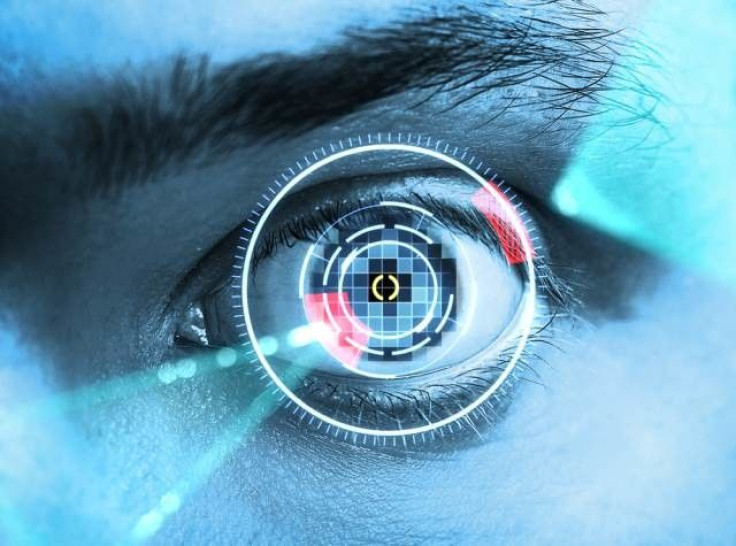Smartphone Manufacturers Aim To Make Businesses Bionic

Unlocking a smartphone with your eye may be the next frontier of smartphone technology, but it will be up to consumers to dictate how far the bionic technology goes.
Iris recognition is a method of identification that uses pattern-recognition to pinpoint the complex and random patterns found in the eye. It is just one of many mechanisms being used by technology companies to connect electronics to the unique features of a users’ body.
Manufacturers including Samsung Electronics Co. (KRX: 005930), Apple Inc. (NASDAQ: AAPL) and HTC Corp. (TPE: 2498) have already introduced various detection technologies on their smartphones, such as fingerprint scanning and facial recognition. These features are used to unlock a handset, sign into various accounts and authorize online payments.
Samsung hinted in a recent Tweet that it may implement iris scanning in future smartphones, and several Samsung executives indicated that the manufacturer is interested in this type of technology. But implementing iris scanning onto smartphones won’t be simple. Analysts say iris scanning isn't only a much more complicated process than fingerprint scanning or facial recognition, it's also much more expensive.
“Unless [manufacturers] find a way to make [iris scanners] cheaper and available for consumer purchase, this kind of application will primarily be targeted at the business sector,” Michela Menting, a cyber-security analyst at ABI Research told International Business Times.
Detection technologies that are already available have been much easier to simplify for the mass market. Menting notes that the Touch ID fingerprint scanning feature on Apple’s iPhone 5s records only about 70 percent of a person’s fingerprint, as scanning a full fingerprint is a much more complicated technology.
Such features have been introduced on smartphones to drum up user interest, but are still being used more in the business sector. For example, though the Samsung Galaxy S5 smartphone -- a mass market product -- includes a fingerprint scanner. Samsung executives have said its primary use at this point is in conjunction with its enterprise security software called Knox.
Smartphones with iris scanners could be much more expensive than consumers are willing to pay. However, a company that requires heightened security for its devices might be willing to arrange for a limited number of handsets to be available for employees. This makes the iris scanner a tantalizing service for businesses.
John Devlin, a hardware analyst at ABI Research, explained to International Business Times how these layers of security could work: Perhaps employees use a passcode to open an app, but when they want to submit a transaction, access a company server or download sensitive information, they could use something like retina scanning to confirm their identity.
“That second layer of security can really help identify a unique person as the one authorized to access that phone or its applications,” Menting said.
Many businesses already use such methods within their computer networks.
“If you’re an enterprise and you issue mobile devices, you have a security policy that's going to include passwords,” she said. “So [body recognition] is a way of selling the mobile equivalent of what you have on PCs to businesses so they can integrate their security policy.”
This does not mean that iris scanners on smartphones will never be available for the mass market. Iris scanners could be introduced on the Samsung Galaxy Note 4, which is expected to release in the fall.
Devlin believes it could be another four or five years before the technology is readily available to consumers. Since iris scanning is more complicated in concept as well as in application, people would be worried about how it works and whether it actually protects devices from being accessed by others for malicious purposes, Devlin said. Manufacturers may test the feature on a few future high-end smartphones to gauge consumer interest before moving forward with mass-market implementation.
“That’s a part of consumer readiness: the level of comfort with these types of solutions that will dictate how fast or how widely they get implemented,” Devlin added.
But mobile iris scanners could tap into a large market of smartphone users for whom security is not as important. According to a Consumer Reports survey done earlier this year, only about one third of Americans use a security lock on their smartphones, even a pin code. Iris scanning could be attractive to these users not for the security aspect, but due to its ease of use, Menting explained.
“[Body recognition] is probably a bit more secure [than a pin] but the idea from the consumer perspective is to streamline access to the phone while still keeping an element of security,” she said. “Iris scanning doesn’t involve you doing anything other than looking that the phone.”
© Copyright IBTimes 2024. All rights reserved.












